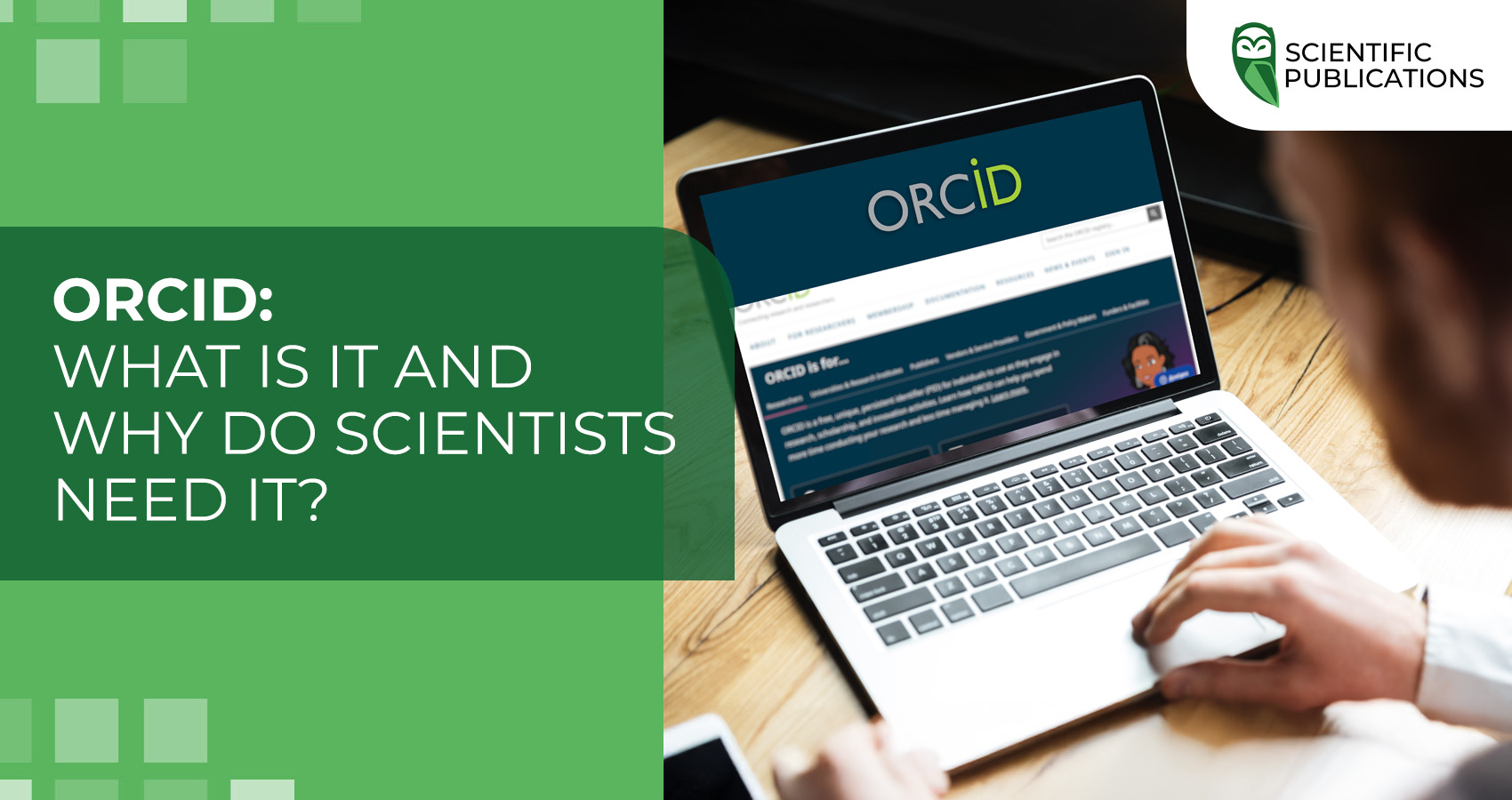In our previous article, we discussed what an ORCID identifier is and why scientists need it. ORCID is a platform used by millions of scientists around the world. It allows you to collect information about your professional activities in one place. Today, we have prepared detailed instructions on how to create an ORCID profile and how to add your research papers.
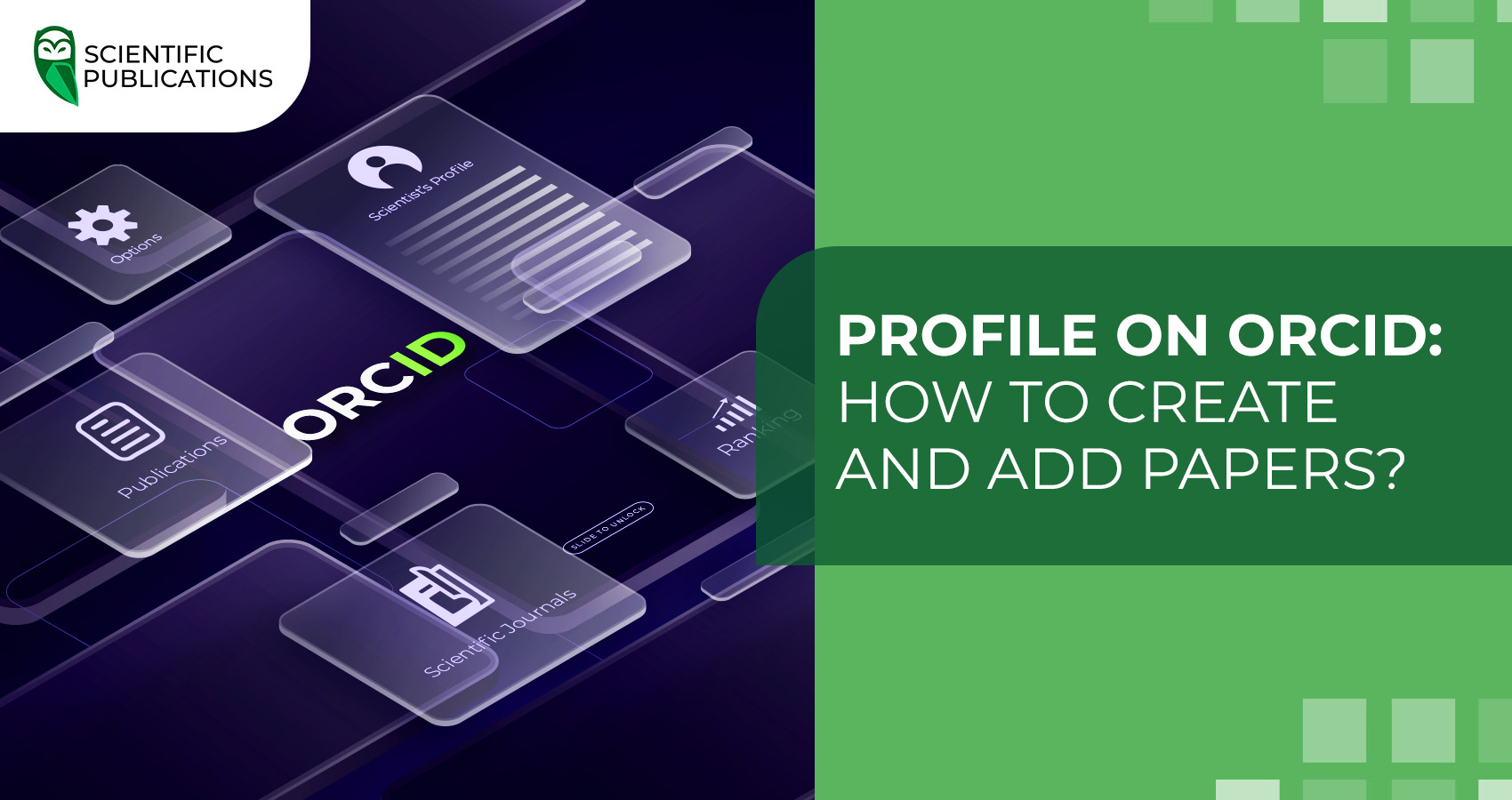
How to create an ORCID profile?
1. Registration
To create a profile on the ORCID platform, click on the link “Register with ORCID” in the upper right corner of the main page of the website.
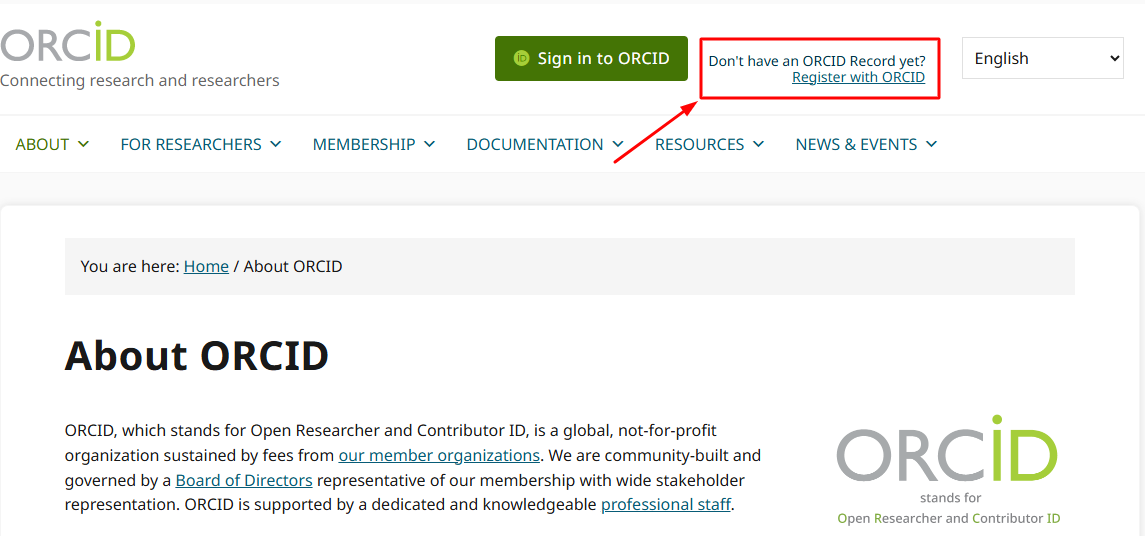
After that, you will see a form to fill in, where you need to provide personal information.
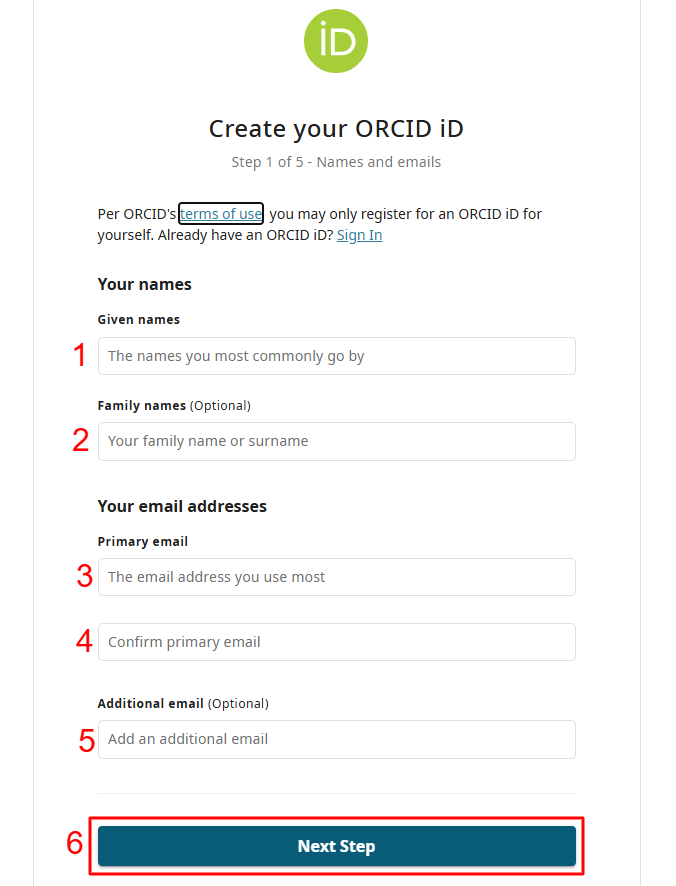
- The names you use most often.
- Your first or last name.
- The email address you use most often.
- Confirmation of the main email address.
- Additional email
- After entering all the information, click ‘Next Step’.
Please note that the email address you use most often may be your personal email address. However, where you are asked to provide an additional email address, it is recommended that you provide the one you use professionally (work email address). This may make it easier to identify your affiliation.
2. Creating a password
After registration, the platform offers to create a password. It is necessary to come up with a strong password that meets the requirements of the system.
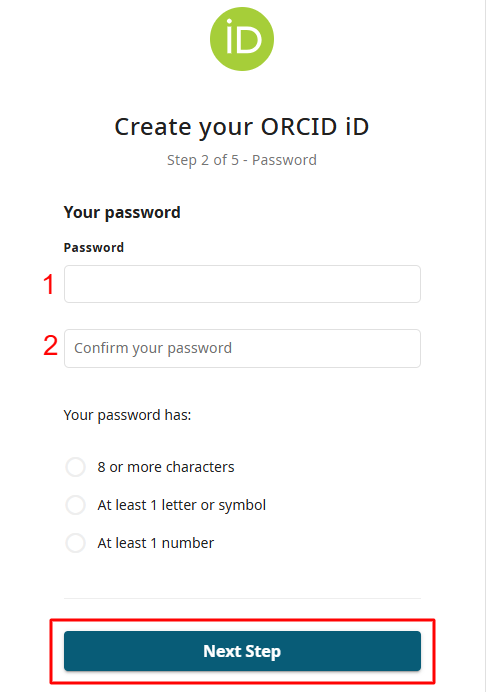
Your password must
- consist of 8 or more characters
- contain at least 1 letter or symbol
- contain at least 1 number
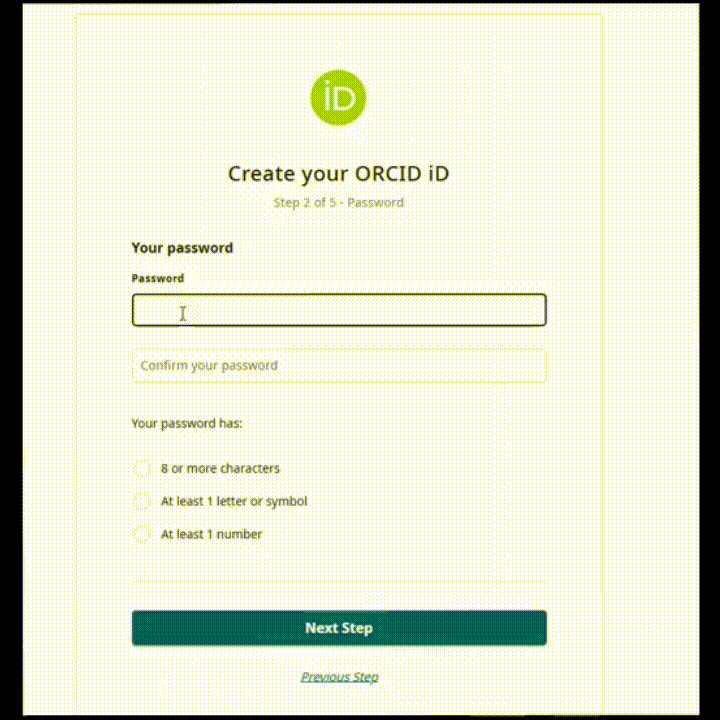
After successfully generating the password, click “Next Step”.
3. Current employment
After creating your password, you need to add information about your current employment. Adding this information will help to clearly identify you in the system and distinguish you from other researchers with a similar name.
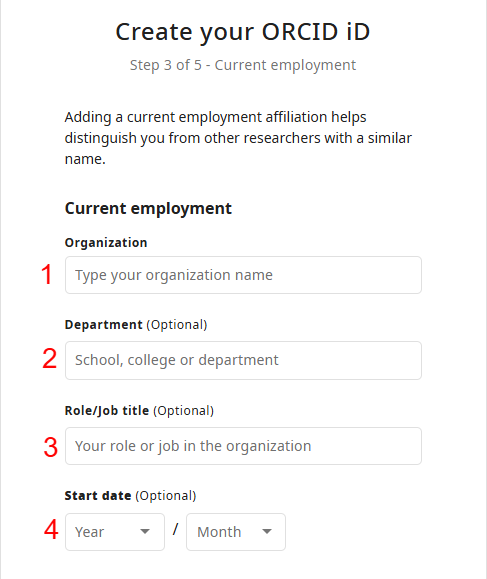
Here you need to provide the following information:
- Organisation/institution you work for.
- Department (optional).
- Role/title (optional).
- Date you started work (optional).
4. Visibility settings
Your ORCID is linked to your ORCID record, which may contain links to your research activities, affiliations, awards, other versions of your name, etc. You have full control over this content and determine who can see it.
The next step is to configure visibility. By default, you will be prompted to select the level of visibility for new items you add to your ORCID profile.
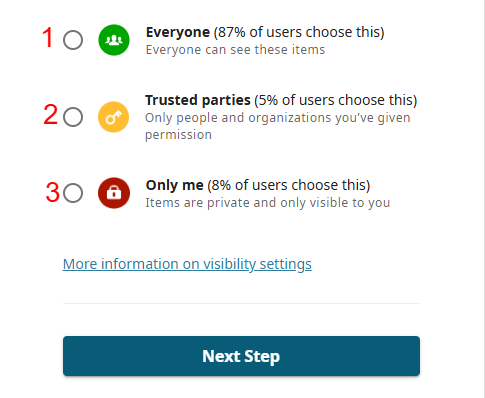
The visibility options are as follows:
- All. The information will be available to all users.
- Proxies. Access to the information will be granted only to those people and organisations that you allow.
- Only me. Items are private and visible only to you.
The choice of visibility depends on how public you want to make your scientific and professional data.
5. Acceptance of the terms and conditions
The last step in the registration process is to accept the terms and conditions. This step is standard in most online services. You should read the terms and conditions of use of the ORCID platform and confirm your agreement with them by ticking the appropriate box. This will complete the registration process and activate your profile.
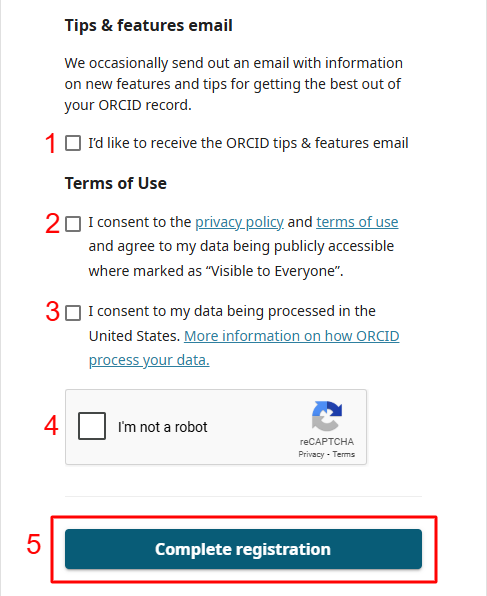
- Receiving tips and news from ORCID. You can choose whether you want to receive tips and news from ORCID. If you agree, from time to time you will receive emails with information about new features of the platform and tips on how to use your account effectively.
- Privacy policy and terms of use. You need to agree to the privacy policy and terms of use of the platform. If you have selected the “Visible to all” option, your data will be available for public viewing.
- Data processing. You consent to the processing of your personal data in the United States. You can read the ORCID Data Processing Policy to learn more about how the platform processes your data.
- Confirmation that you are not a robot. To complete your registration, you may be asked to take a test to confirm that you are not a robot (e.g., selecting appropriate pictures).
- Complete the registration. After completing all the steps, click “Complete registration”.
Congratulations, you have successfully created an ORCID profile!
Once you have created a profile on the platform, you will be able to see the following advert on the page:

ORCID has sent you an email to one of the email addresses provided. You need to confirm at least one of them before you can start using ORCID.
Researcher profile on ORCID
Once you have confirmed one of the email addresses provided during registration, you can manually edit the information in your ORCID profile.
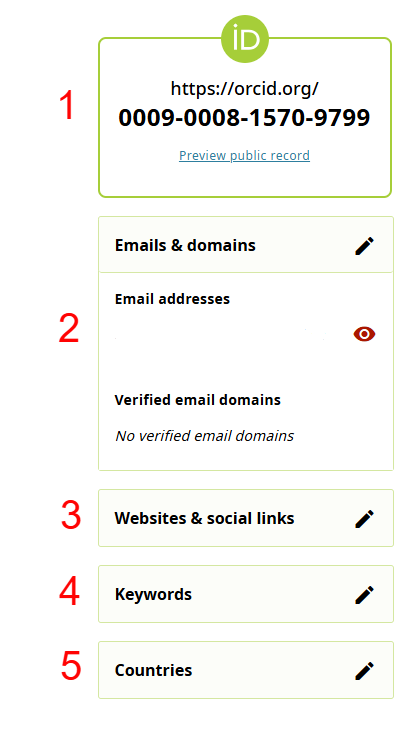
- Unique identifier. At the top left of the page, you will see a link with highlighted numbers in a box - this is your ORCID. This number is a permanent identifier that identifies you in the ORCID system.
- Email. In this section you can edit or add new email addresses. If your personal or work email address changes, or you create a new one, you should add it here. Having multiple email addresses helps maintain access to your record. We recommend using both personal and professional email addresses.
- Websites and personal networks. Here you can add links to your personal websites, research department profiles, Wikipedia pages, or social media accounts. This helps to further expand access to your research and professional activities.
- Keywords. Add keywords or phrases that describe your research activities. This will make it easier for other ORCID users to find your profile, especially if they are looking for researchers in specific areas.
- Countries. In this section, you can add countries or locations where you conduct your research or focus on specific topics. You can add an unlimited number of countries, which makes it possible to clearly indicate the international focus of your research activities.
In addition, you can change information in your profile, such as your name, add or remove your place of work, education, and other important information that may change throughout your career.
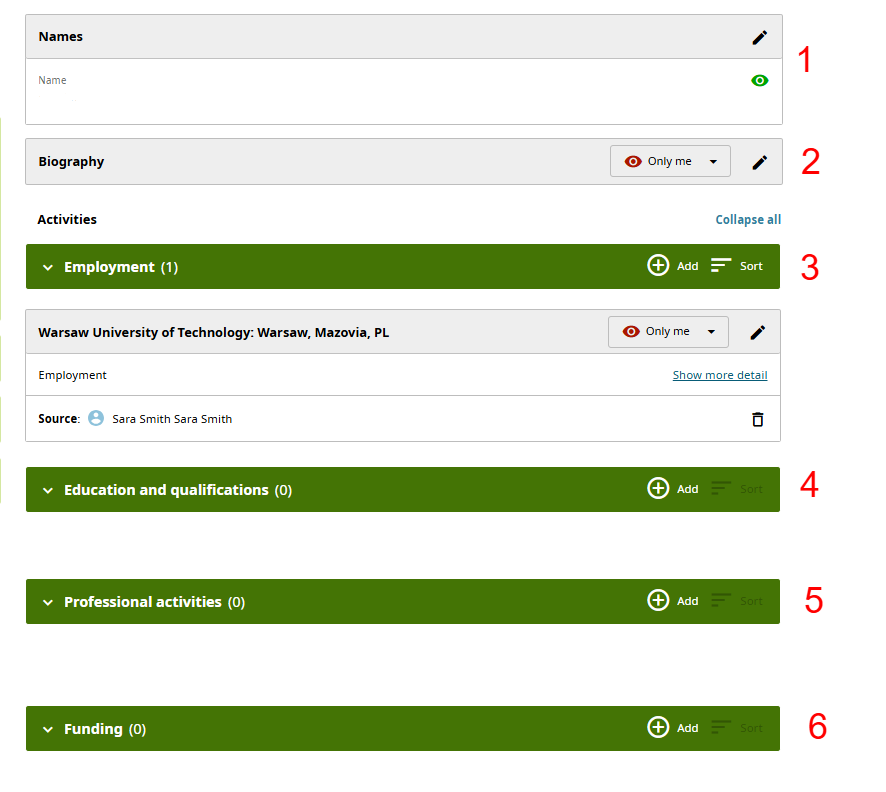
- Name. ORCID allows you to add and manage different name variants. You can specify how your name should appear in references. This can be your official name or a shortened name, a middle name, a former name, or variants of names with different characters or in a different language. Adding other names makes it easier for people to find you in the ORCID registry.
- Biography. Add information about yourself, your research interests, research or other important aspects that enhance your profile.
- Place of work. In this section, you can add, modify, or delete your places of employment. This allows you to reflect the most current academic institutions or organisations where you are working.
- Education and qualifications. Here you can add information about the educational institutions you attended and the professional qualifications you have obtained during your career.
- Professional activities. Include information about invited positions, memberships, awards or prizes you have received.
- Funding. In this section, you can indicate grants, awards, and other forms of funding that you have received to support your research.
This information will help to create a more complete and detailed profile on the ORCID platform that other users and organisations can view.
How do I add publications to ORCID?
There are several ways to add your research papers and publications to your ORCID profile.
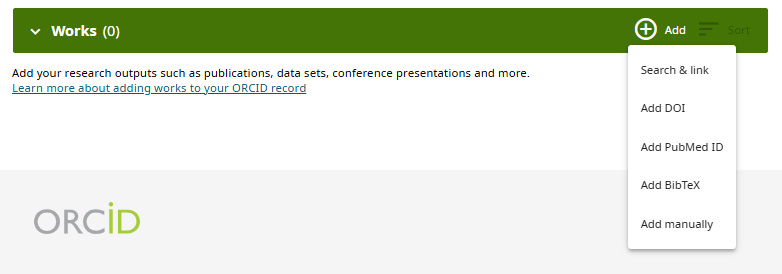
Search and reference
This is the recommended way to complete your profile, which makes it easier to add papers, funding and peer review, saving time. You can choose a platform from the list to link items to your profile. The platforms include Scopus, Crossref Metadata Search, ISNI, DataCite, BASE (Bielefeld Academic Search Engine), and others.
DOI identifier
To link publications to your profile, you can use the DOI identifier. You can enter the full URL of the DOI or just its value.
PubMed identifier
As with DOI, you can add publications using the PubMed identifier, using either the full URL or just the value of the identifier.
BibTeX
You can also add research papers to ORCID using BibTeX (.bib). Import citations from BibTeX (.bib) files, including files from Google Scholar.
Add manually
You can also manually add information about your work, including the type of work, title, journal, publication date, reference, ID, citation, etc.
Creating and completing a profile on the ORCID platform is easy, but it is important to familiarise yourself with all the platform's functionality. A correctly completed profile helps a researcher avoid identification problems, simplifies the search process, ensures the correct display of the name, and allows them to quickly communicate with other researchers. Such a profile allows you to view research papers, grants, and other important information.
Contact Scientific Publications! Our experts will help you prepare to publish your research, as they have many years of experience in publishing processes. Fill out the form below or submit an application online, and we will contact you as soon as possible. Let's reach new heights together!
Follow our blog and subscribe to our social media channels so you don't miss out on interesting, relevant and useful information!



